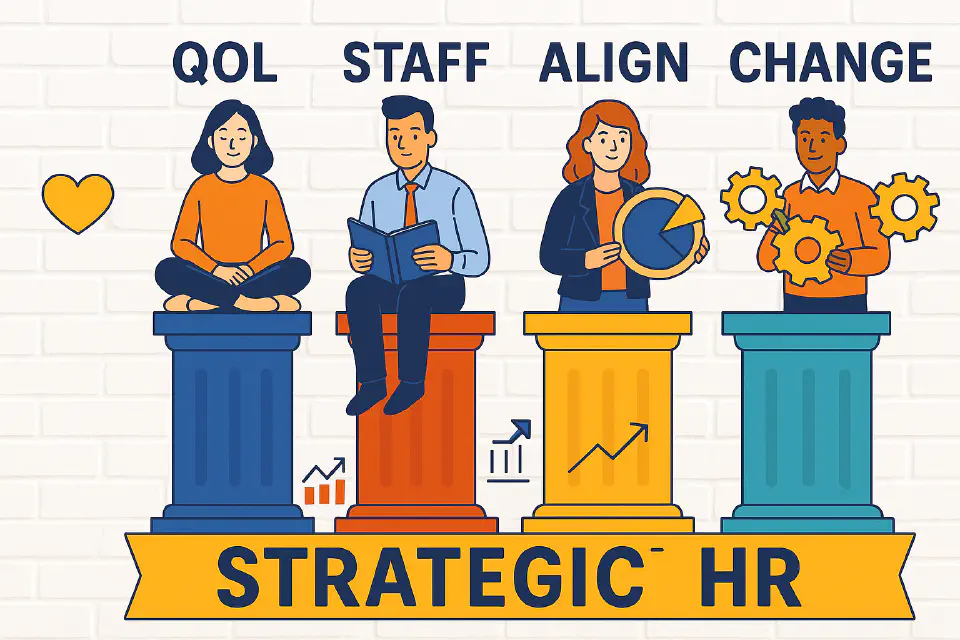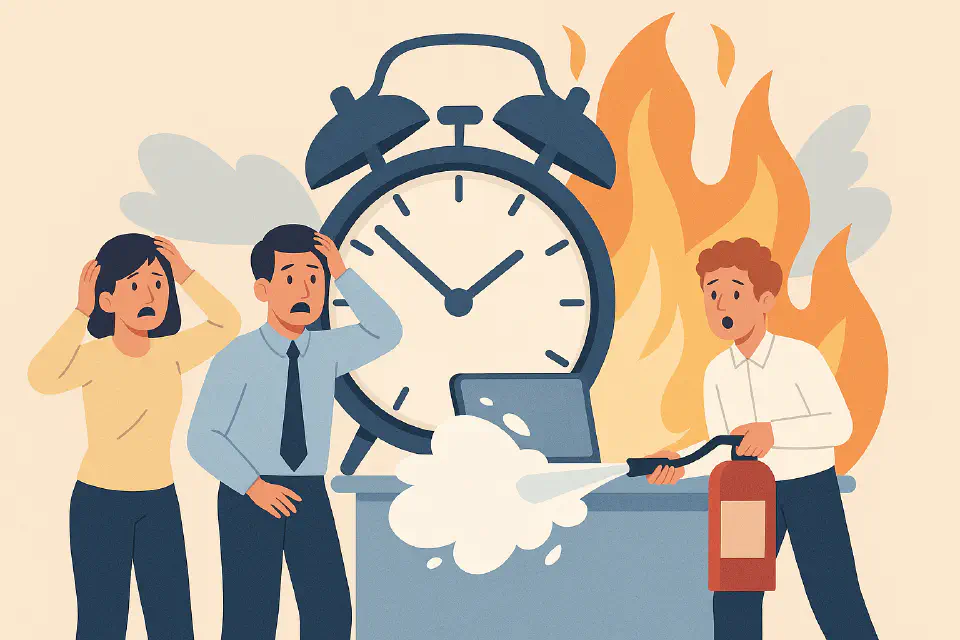
Strategic HR: Turning Roles into Real Impact
HR is often expected to 'be strategic' — but what does that actually mean? This page explores how HR can step beyond its traditional responsibilities to actively shape business outcomes, leadership, and long-term success.
What Is Strategic HR?
Many HR leaders are told to “think more strategically,” but few are given the tools or clarity to do so. Strategic HR means aligning people practices with the broader business goals — not just supporting execution, but co-creating the direction of the organization.
Strategic HR is not a single function or title — it’s a mindset and an operating model.
From Admin to Strategy: A Shifting Paradigm
Historically, HR was focused on compliance, benefits administration, and hiring paperwork. These are still important — but they don’t move the business forward.
Modern organizations need HR to:
- Anticipate workforce needs
- Shape organizational culture
- Build capabilities that fuel innovation
- Design systems for performance and growth
This shift requires HR teams to operate less like internal service centers and more like internal consulting firms that blend data, empathy, and business logic.
The Three Pillars of Strategic HR
Strategic HR is built around three interdependent pillars:
1. Alignment with Business Objectives
HR must understand the company’s business model, growth plans, and market position. Only then can it:
- Hire the right talent for future needs
- Develop leadership for emerging challenges
- Shape culture that supports strategy
2. Data-Driven Decision Making
Strategic HR leverages people analytics to:
- Identify trends (e.g. flight risk, skill gaps)
- Model future scenarios (e.g. workforce needs in 12 months)
- Track the ROI of HR programs (e.g. engagement impact on sales)
3. Organizational Enablement
Strategic HR isn’t about doing more work — it’s about enabling others to lead well. That includes:
- Equipping managers with the tools and mindset to lead people
- Building feedback loops and growth cultures
- Creating systems where performance and well-being co-exist
Strategic Roles Within HR Teams
Not every HR role is inherently strategic — but every role can contribute strategically when designed intentionally. Below are common roles and how they support strategic HR:
| HR Role | Strategic Contribution |
|---|---|
| HR Business Partner | Aligns people plans with business strategy in each unit |
| L&D Lead | Develops capabilities for future needs |
| Talent Acquisition | Attracts mission-aligned, high-impact talent |
| HR Analyst | Provides insights to inform decisions and track impact |
| DEI Specialist | Shapes inclusive culture aligned with values and goals |
| CHRO / CPO | Drives people strategy at board level |

Strategic HR in Practice: Examples
Case 1: Workforce Planning at Scale
A global logistics company forecasts a major automation rollout in 2 years. HR leads a scenario planning initiative:
- Models job displacement and upskilling needs
- Aligns L&D programs with new tech
- Advises leadership on change readiness
Outcome: 73% of affected workers reskilled internally. Minimal disruption.
Case 2: Cultural Transformation in a Merger
After a merger of two banks, HR designs a unifying culture framework:
- Runs listening tours and focus groups
- Facilitates cultural integration workshops
- Embeds new behaviors in performance reviews
Result: Increased trust scores and faster post-merger integration.
Case 3: Enabling Line Managers
A SaaS scale-up experiences high burnout. HR shifts from policy-making to enabling:
- Trains managers in workload planning and empathy-based leadership
- Introduces team health checks
- Aligns incentives with team sustainability
Outcome: Burnout incidents drop by 35%. Voluntary attrition stabilizes.
Strategic Frameworks in HR
Strategic HR is supported by established models. These provide structure to assess maturity and align interventions.
Ulrich HR Model
- Centers of Excellence (CoEs)
- HR Business Partners (HRBPs)
- Shared Services
Encourages standardization + strategic partnership.
The Value Chain Approach
- HR activities → Intermediate outcomes (skills, motivation) → Business outcomes
- HR must show line of sight from initiatives to impact
Balanced Scorecard
- Links HR metrics with financial, customer, internal, and learning metrics
- Aligns HR KPIs with enterprise goals
Challenges to Becoming Strategic
Being strategic is not about ambition — it requires infrastructure and mindset.
Common blockers:
- Lack of business acumen in HR team
- Siloed or reactive HR structure
- No access to strategic planning process
- Time consumed by transactional HR
What Enables Strategic HR?
To move HR into a truly strategic role, organizations must:
- Involve HR in executive planning cycles
- Invest in HR capabilities (analytics, consulting, tech)
- Clarify roles and decision rights across the HR team
- Empower HR to say no when necessary
Bestp: Make Strategic HR Intentional
Strategic HR doesn’t happen by accident. It must be designed, resourced, and measured.
Final Thought
Strategic HR isn’t about sitting at the table — it’s about speaking the language of the business, asking better questions, and driving better outcomes.
When HR takes responsibility for growth, capability, culture, and change, it moves from function to force.